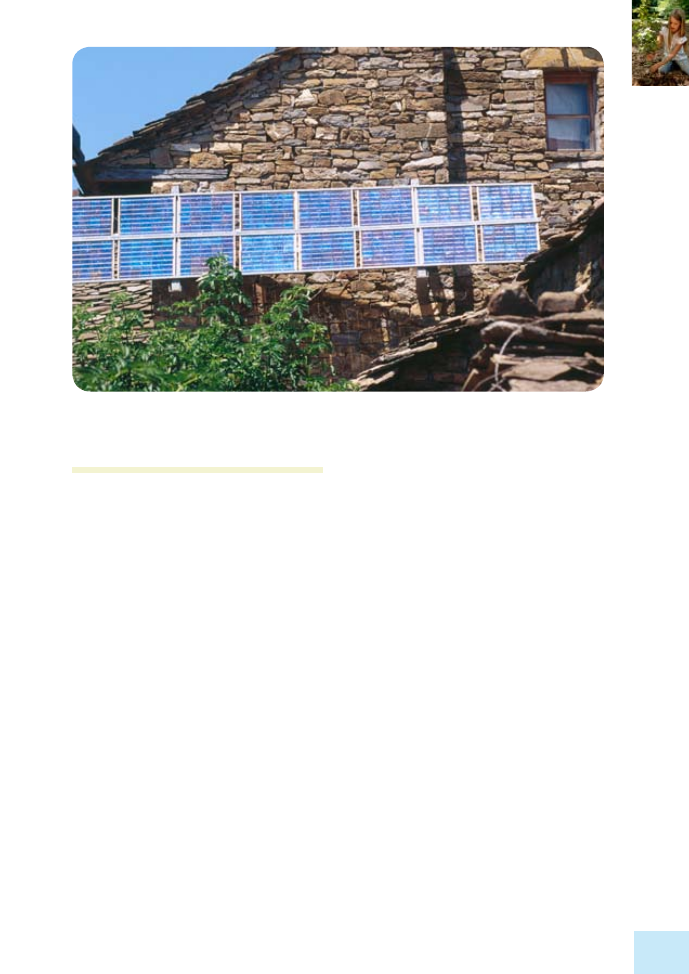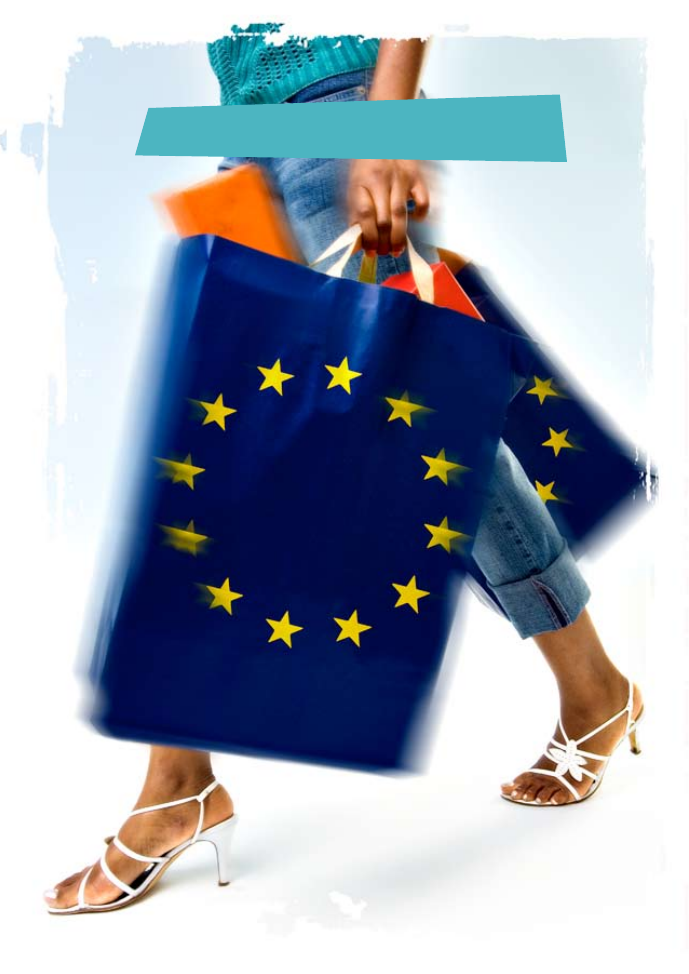ВУЗ: Не указан
Категория: Не указан
Дисциплина: Не указана
Добавлен: 07.04.2021
Просмотров: 630
Скачиваний: 1

24
24
known as the Structural Funds and the
Cohesion Fund:
• The
European Regional Development
Fund (ERDF)
is the first Structural Fund and
provides funding to strengthen economic,
social and territorial cohesion by reducing
differences between regions and supporting
the structural development and adjustment
of regional economies, including the rede-
velopment of declining industrial regions.
•
The
European Social Fund (ESF),
the
second Structural Fund, provides funding
for vocational training and job-creation
initiatives.
• In addition to the Structural Funds,
there is a
Cohesion Fund
, which is used to
finance transport infrastructure and envi-
ronmental projects in EU countries whose
GDP per capita is lower than 90% of the EU
average.
b. The common agricultural
policy (CAP)
The aims of the CAP, as set out in the origi-
nal Treaty of Rome from 9, have largely
been achieved: a fair standard of living has
been ensured for the farming community;
markets have been stabilised; supplies reach
consumers at reasonable prices; farming in-
frastructure has been modernised. Other
principles adopted over the course of time
have also worked well. Consumers enjoy
security of supply and the prices of agri-
cultural products are kept stable, protected
from fluctuations on the world market.
The
European Agricultural Guidance and
Guarantee Fund (EAGGF)
is the name of
the budget for the CAP.
However, the CAP has been a victim of its
own success. Production grew far faster than
consumption, placing a heavy burden on
the EU budget. In order to resolve this prob-
lem, agriculture policy had to be redefined.
This reform is beginning to show results.
Production has been curbed. Farmers are be-
ing encouraged to use sustainable farming
practices that safeguard the environment,
preserve the countryside and contribute to
improving food quality and safety.
The new role of the farming community is to
ensure a certain amount of economic activ-
ity in every rural area and to protect the di-
versity of Europe’s countryside. This diversity
and the recognition of a ‘rural way of life’
— people living in harmony with the land —
are an important part of Europe’s identity.
The European Union wants the World Trade
Organisation (WTO) to put more emphasis
on food quality, the precautionary principle
and animal welfare. The European Union
has also begun reforming its fisheries policy.
The aim here is to reduce the overcapacity
in fishing fleets, to preserve fish stocks and
to provide financial assistance to allow fish-
ing communities to develop other economic
activities.
c. The social dimension
The aim of the EU’s social policy is to correct
the most glaring inequalities in European
society. The European Social Fund (ESF) was
established in 9 to promote job crea-
tion and help workers move from one type
of work and/or one geographical area to
another.
Financial aid is not the only way in which
the EU seeks to improve social conditions
Producing the food that you eat: quality
is as important as quantity.
© Chris Windsor/Photodisc Red/Getty Images
2
2
Europe in 12 lessons
in Europe. Aid alone could never solve all
the problems caused by economic reces-
sion or by regional under-development. The
dynamic effects of growth must, above all,
encourage social progress. This goes hand
in hand with legislation that guarantees a
solid set of minimum rights. Some of these
rights are enshrined in the Treaties, e.g. the
right of women and men to equal pay for
equal work. Others are set out in directives
concerning the protection of workers (health
and safety at work) and essential safety
standards.
In 99, the Maastricht European Council
adopted the
Community Charter of Basic
Social Rights
, setting out the rights that all
workers in the EU should enjoy: free move-
ment; fair pay; improved working condi-
tions; social protection; the right to form
associations and to undertake collective
bargaining; the right to vocational training;
equal treatment of women and men; worker
information, consultation and participation;
health protection and safety at the work-
place; protection for children, the elderly
and the disabled. At Amsterdam in June
99, this Charter became an integral part
of the Treaty and is now applicable in all the
member states.
II. Innovation policies
The European Union’s activities impact on
the day-to-day life of its citizens by address-
ing the real challenges facing society: envi-
ronmental protection, health, technological
innovation, energy, etc.
a. The environment and sustainable
development
The cornerstone of EU environmental activ-
ity is an action programme entitled ‘Envi-
ronment 200: our future, our choice‘. This
covers the period from 200 to 200 and
emphasises the need to:
• mitigate and slow down climate change
and global warming;
• protect natural habitats and wild fauna
and flora;
• deal with problems linked to environ-
ment and health;
• preserve natural resources and manage
waste efficiently.
Throughout the period covered by this pro-
gramme and the five programmes preced-
ing it, and in more than 0 years of setting
standards, the EU has put in place a com-
prehensive system of environmental protec-
tion.
The problems being tackled are extremely
varied: noise, waste, the protection of natu-
ral habitats, exhaust gases, chemicals, in-
dustrial accidents, the cleanliness of bath-
ing water and the creation of a European
information and assistance network for
emergencies, which would take action in the
event of environmental disasters such as oil
spills or forest fires.
More recently, concerns about the health ef-
fects of pollution have been examined in an
environment and health action plan for the
2004–0 period. This plan establishes the
link between health, the environment and
research policy.
European regulation provides the same level
of protection throughout the EU, but is flex-
ible enough to take account of local circum-
stances. It is also constantly being updated.
For example, it has been decided to rework
the legislation concerning chemicals and re-
place earlier rules, which were developed on
a piecemeal basis, with a single system for
the registration, evaluation and authorisa-
tion of chemicals (REACH).
This system is based on a central database
to be managed by a new European Chemi-
cals Agency, located in Helsinki. The aim is
to avoid contamination of the air, water, soil
or buildings, to preserve biodiversity and to
improve the health and safety of EU citizens
while at the same time maintaining the
competitiveness of European industry.
2
2
b. Technological innovation
The founders of the European Union rightly
saw that Europe’s future prosperity would
depend on its ability to remain a world lead-
er in technology. They saw the advantages
to be gained from joint European research.
So, in 98, alongside the EEC, they estab-
lished
Euratom
— the European Atomic En-
ergy Community. Its aim was for EU coun-
tries together to exploit nuclear energy for
peaceful purposes. As part of this, the Joint
Research Centre (JRC) was created consist-
ing of nine institutes at four locations: Is-
pra (Italy), Karlsruhe (Germany), Petten (the
Netherlands) and Geel (Belgium).
However, as innovation gathered pace,
European research had to diversify, bring-
ing together as wide a variety of scientists
and research workers as possible. The EU
had to find new ways of funding their work
and new industrial applications for their
discoveries.
Joint research at EU level is designed to
complement national research programmes.
It focuses on projects that bring together a
number of laboratories in several EU coun-
tries. It also supports fundamental research
in fields such as controlled thermonuclear
fusion (a potentially inexhaustible source
of energy for the 2st century). Moreover,
it encourages research and technological
development in key industries such as elec-
tronics and computers, which face stiff com-
petition from outside Europe.
The main vehicle for funding EU research
is a series of framework programmes. The
seventh research and technological de-
velopment framework programme
covers
the 200– period. The biggest share of
the
€
0 billion plus budget will go on areas
like health, food and agriculture, informa-
tion and communications technology, nano-
sciences, energy, the environment, transport,
security and space and socioeconomic sci-
ences. Additional programmes will promote
ideas, people and capacities, via research
work at the frontiers of knowledge, support
for researchers and their career development
and international cooperation.
c. Energy
Fossil fuels — oil, natural gas and coal — ac-
count for 80% of energy consumption in
the EU. A large and growing proportion of
these fossil fuels are imported from outside
the EU. At present, 0% of gas and oil is
imported, and this dependence could grow
to 0% by 200. The EU will thus be more
vulnerable to cuts in supply or price hikes
caused by international crises. Another rea-
son to reduce its consumption of fossil fuels
is to reverse the process of global warming.
Various steps will have to be taken in fu-
ture, such as saving energy by using it more
intelligently, developing alternative energy
sources (particularly renewable energy sourc-
es in Europe), and increasing international
cooperation. Energy consumption could fall
by one fifth by 2020 if consumers changed
their behaviour and if technologies that im-
prove energy efficiency were fully used.
Research fuels economic growth.
© Andersen Ross/Digital Vision/Getty Images

2
2
Europe in 12 lessons
III. Paying for Europe:
the EU budget
To fund its policies, the European
Union has an annual budget of more than
€
20 billion. This budget is financed by
what is called the EU’s ‘own resources’,
which cannot exceed an amount equivalent
to .24% of the total gross national income
of all the member states.
These resources are mainly drawn from:
• customs duties on products imported
from outside the EU, including farm levies;
• a percentage of the value-added tax
applied to goods and services throughout
the EU;
• contributions from the member states
in line with their respective wealth.
Each annual budget is part of a seven-
year budget cycle known as the ‘financial
perspective’. The financial perspectives are
drawn up by the European Commission and
require unanimous approval from the mem-
ber states and negotiation and agreement
with the European Parliament. Under the
200– financial perspective, the total
budget for this period is
€
84.4 billion.
Harnessing the planet’s natural sources of energy is one way of combating climate change.
© Targa/Van Parys Media

28
28
.7. Economic and monetary union
(EMU) and the euro
6. The single market